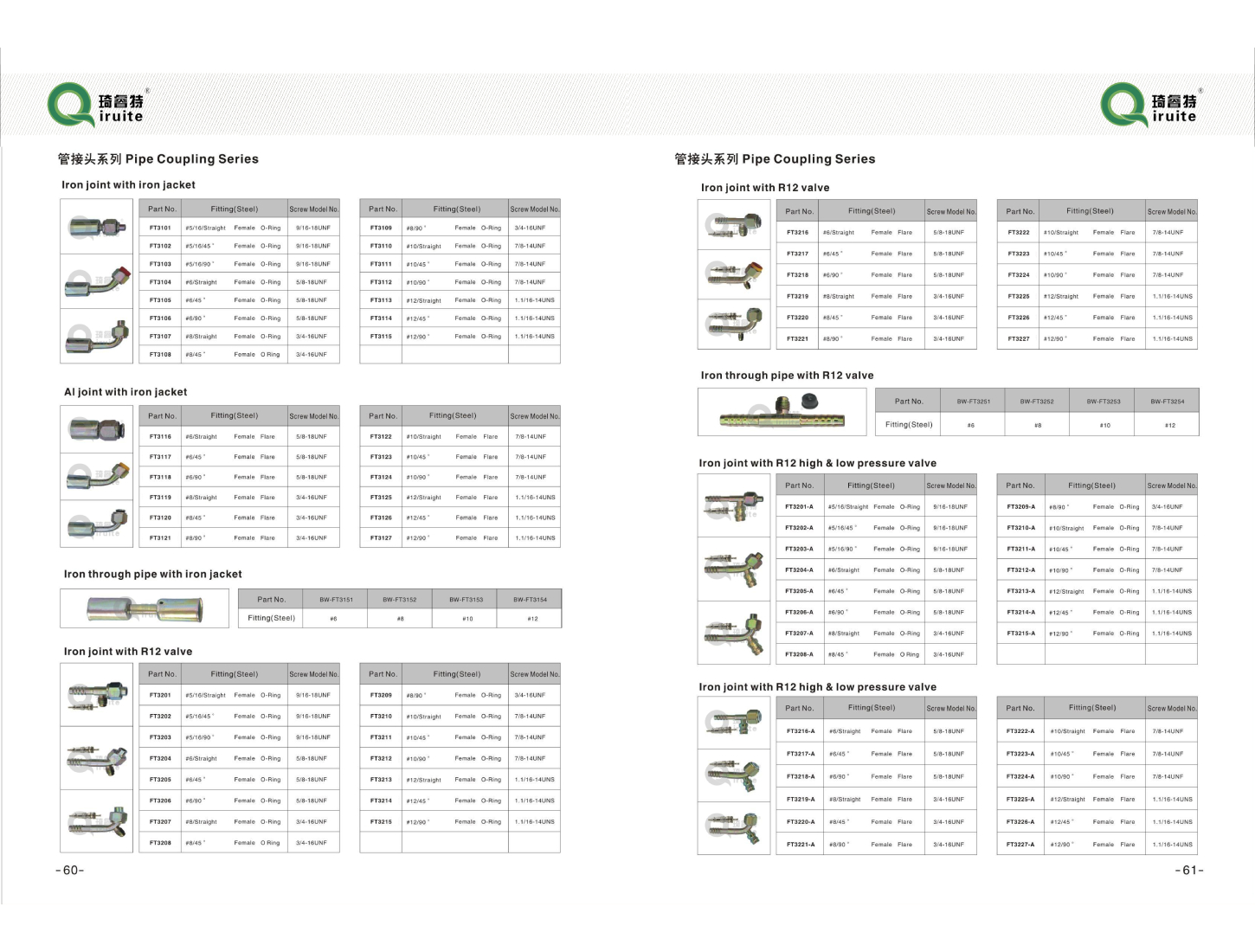power steering hose material
Understanding Power Steering Hose Materials An In-Depth Analysis
Power steering systems have become essential in modern vehicles, providing drivers with the ease and comfort of controlling their steering effort with minimal physical strain. At the heart of these systems lies a critical component the power steering hose. The material used in these hoses plays a significant role in the overall effectiveness and longevity of the power steering system. In this article, we will explore the various materials used in power steering hoses, their properties, advantages, and the factors that influence material selection.
Common Materials Used in Power Steering Hoses
1. Rubber Traditional power steering hoses are primarily made from synthetic rubber. Synthetic rubber offers excellent flexibility, resilience, and resistance to various environmental factors, including temperature fluctuations and exposure to chemicals. It can withstand the pressures exerted by hydraulic fluid, making it a common choice in the automotive industry.
2. Polyurethane Another material increasingly used in power steering hoses is polyurethane. This material provides impressive abrasion resistance and is more flexible than traditional rubber. Polyurethane hoses can also handle higher pressure, offering a significant advantage in performance and durability.
3. Metal Reinforcements Many power steering hoses incorporate metal reinforcements, typically made from stainless steel or aluminum. These reinforcements enhance the hose's structural integrity and help maintain its shape under pressure. By preventing kinking or bursting, metal reinforcement ensures the hoses can handle the demands of high-performance steering systems.
4. Thermoplastic Elastomers (TPE) TPEs are a class of materials that combine the properties of rubber and plastic. They are lightweight, flexible, and have excellent chemical resistance. When used in power steering hoses, TPEs can provide improved durability and performance compared to traditional rubber hoses.
Properties of Power Steering Hose Materials
When selecting materials for power steering hoses, several key properties must be considered
- Temperature Resistance Power steering systems operate in a range of temperatures, both hot and cold. Therefore, the material must not degrade or lose its functionality under these conditions.
- Chemical Resistance Power steering fluid contains additives that can be corrosive
. The chosen material must resist degradation due to chemical exposure to ensure a long lifespan.power steering hose material

- Pressure Rating Power steering hoses need to withstand high pressures, especially during sharp turns or sudden maneuvers. The material's ability to handle such pressures without elongating or bursting is crucial.
- Flexibility and Bend Radius Hoses must be flexible enough to accommodate the movement of the steering system without crimping or kinking. A suitable bend radius is essential to maintain fluid flow and avoid blockages.
Factors Influencing Material Selection
Several factors influence the choice of material for power steering hoses
1. Application Requirements The specific requirements of the vehicle, including its size, weight, and intended use, impact the selection of hose material. For instance, high-performance vehicles may require hoses that can endure higher pressures.
2. Cost Considerations Budget constraints can significantly affect the choice of material. While advanced materials like TPEs may offer better performance, they can also be more expensive than traditional rubber.
3. Manufacturer Specifications Automotive manufacturers often have precise specifications that dictate the materials used in various components, including power steering hoses. Compliance with these specifications is crucial for ensuring vehicle safety and performance.
4. Availability and Supply Chain The availability of materials can inevitably influence choices. Manufacturers may opt for materials that are more readily available to avoid delays in production.
Conclusion
In conclusion, the material used for power steering hoses is crucial for the performance and longevity of a vehicle's steering system. As technology advances, new materials such as polyurethane and thermoplastic elastomers are emerging, offering enhanced properties that traditional rubber may not provide. Understanding the various materials, their properties, and the factors influencing selection can empower manufacturers and consumers alike to make informed decisions for optimal vehicle performance. As the automotive industry evolves, so too will the materials used in power steering systems, leading to more efficient and reliable vehicles on the road.
-
Ultimate Spiral Protection for Hoses & CablesNewsJun.26,2025
-
The Ultimate Quick-Connect Solutions for Every NeedNewsJun.26,2025
-
SAE J1401 Brake Hose: Reliable Choice for Safe BrakingNewsJun.26,2025
-
Reliable J2064 A/C Hoses for Real-World Cooling NeedsNewsJun.26,2025
-
Heavy-Duty Sewer Jetting Hoses Built to LastNewsJun.26,2025
-
Fix Power Steering Tube Leaks Fast – Durable & Affordable SolutionNewsJun.26,2025

